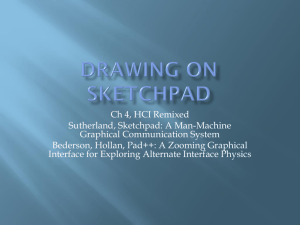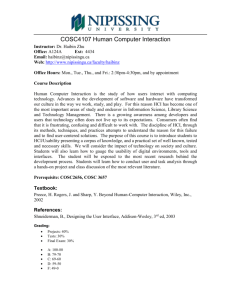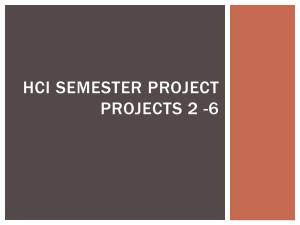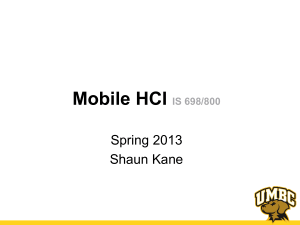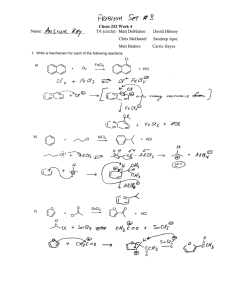2515 - HCI Design
advertisement
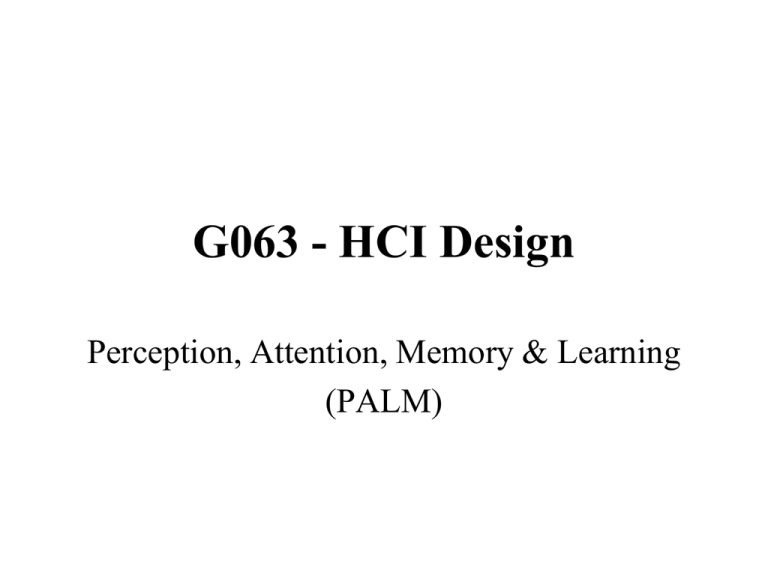
G063 - HCI Design Perception, Attention, Memory & Learning (PALM) Learning Objectives: At the end of this topic you should be able to: • indicate how perception, attention, memory, and learning affect HCI design choices HCI Design Factors In trying to design an HCI which: • is easy to learn • is easy to remember • reduces user error Factors to be considered will be: • Perception • Attention • Memory • Learning Perception • is the input from sight and sound (& touch?) • user will have preconceived ideas : – colours: green for go, red for stop – sound: certain sounds are perceived as happy or sad – touch: key ‘click’ when pressed haptic feedback • need to take preconceived ideas into account: match = user thinks they can use the system match = user may think they can’t use the system Attention • a user may have a limited attention span; So, to maintain attention: • use consistent & logical layout – – – – grouping of similar items - logical menu structure familiar data entry - top to bottom, left to right consistency - buttons & menus in the same place (on all screens/web pages) consistent use of colour • uncluttered screen layout: – too much information disinterested user (short attention span) • clear labels used, salient points obvious • to gain attention use: – flashing text, pop-up messages, sounds, ….. Memory • long-term, short-term & physical memories used • an interface may be used infrequently – so can’t rely on user remembering how to use system – need to use links to pre-existing knowledge • i.e. use user’s mental model • physical & short term memory will be involved – designer must ensure short term memory is used • ‘keep it simple and recognisable’ To aid memory: • screen layouts should be consistent & uncluttered • use of colour should be consistent and sensible • design should link to pre-existing knowledge Learning • user may not use the system often • user may not have received training • system must be intuitive Try to use: • uncluttered screen layout • group items on screen – so layout matches way user works • simplistic language • on-screen help


